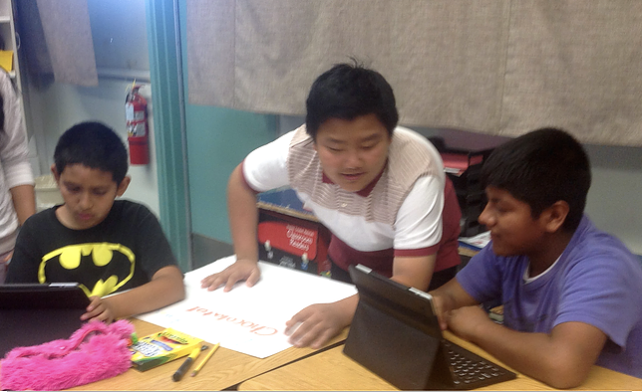
In working with districts and school districts across California’s Central Valley, leaders often ask me to teach their teams to use tech tools in the classroom. The most common request is that I lead trainings on digitizing student tasks. While I appreciate that these administrators seek to increase technology use in classrooms, their focus concerns me. Technology in and of itself is not the goal. Learning goals must always be at the forefront when selecting technology tools. How then do we create professional development for educators that empower them to use technology not as an end itself, but as a tool for accelerating learning of content? And how do we ensure that educators use technology in an environment of solid pedagogical practices?

Rather than leading professional development for teachers based on technology tools themselves, we begin by ensuring that they have a solid foundation from which to build. Technology does not replace good instruction. It can have the opposite effect when placed in an environment that does not foster student-led learning. While students can be engaged with 1:1 devices, completing digital worksheets or educational games, this does not reflect an innovative learning environment that celebrates lifelong learning. Students must not be merely engaged with technology, they must be taught to use technology in a way that fuels their creativity and curiosity. Engagement is not enough, students must be empowered in the learning process. Even with 1:1 devices, not all students need to be using a device at all times. Students must be taught that technology is to be used to serve the learning process as needed. In order to create environments that empower students and ignite their natural curiosity, our professional development for teachers must change to reflect the pedagogy we ask them to employ in the classroom. Solid professional development empowers educators to create innovative learning environments. I can teach teachers how to use Google Classroom, but we can do better than that. Instead, let’s engage teachers in discussions about their learning goals. From there, we can teach our educators to view technology through a different lens, not as an end to itself but as a powerful tool that can lead to increased student voice & choice, authentic audiences, and ownership of the learning.

Let’s teach our teachers to allow our students to control their own learning, to encourage our students to develop their own methods of demonstrating content competency. This is the key to creating future ready students. While our teachers may not have knowledge of how to use the latest technology tools at their disposal, students themselves can be empowered to teach each other to create videos, write blogs, create learning experiences to teach their peers, develop video games, and more.

Teaching is tied to relationships with students. Relationships are built upon trust. Let us trust our students to lead their own learning. And let us use technology not as a replacement for paper worksheets, but as a tool for students, to be used as it serves their learning goals.
